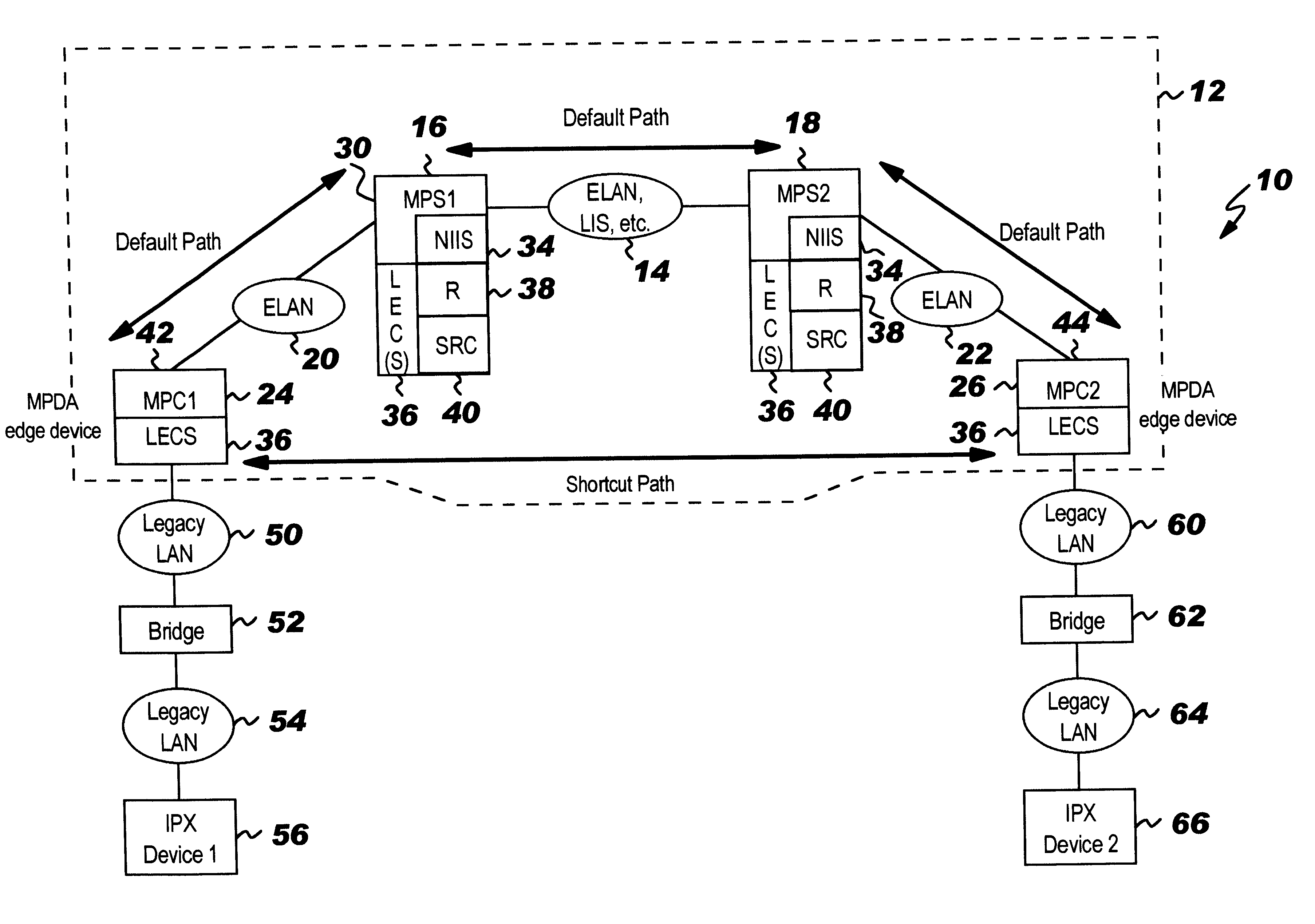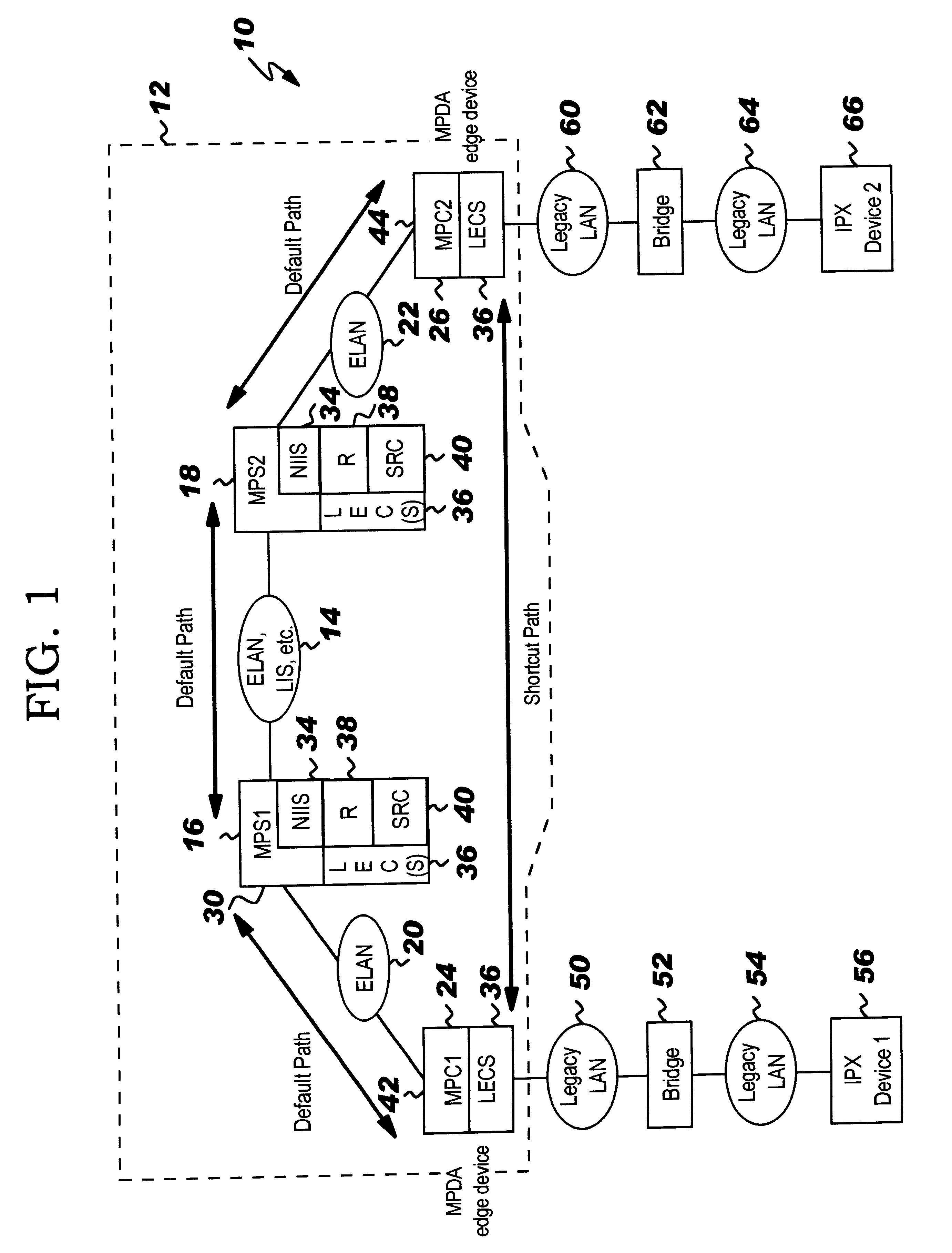Method and system within a computer network for maintaining source-route information at a router bypassed by shortcut communication
a shortcut communication and source-route technology, applied in the field of data communication, can solve the problems of reducing and affecting the service life of the conventional broadcast network
- Summary
- Abstract
- Description
- Claims
- Application Information
AI Technical Summary
Problems solved by technology
Method used
Image
Examples
Embodiment Construction
With reference now to the figures and in particular with reference to FIG. 1, there is depicted an illustrative embodiment of a data communication internetwork 10 in accordance with the present invention. As depicted, data communication internetwork 10 includes an MPOA protocol network 12 containing an ATM emulated subnet 14, which as indicated in FIG. 1, can be an ELAN or LIS, for example. ATM emulated subnet 14 has a first router 16 and a second router 18 attached. Routers 16 and 18 each link ATM emulated subnet 14 with a respective one of ELANs 20 and 22. ELAN 20 has an attached MPOA edge device 24, and ELAN 22 has an attached MPOA edge device 26. As will be appreciated by those skilled in the art, MPOA protocol network 12 also contains many other conventional components, such as LESs, BUSs, LECS, that are utilized to implement the ATM and LANE protocols, but are omitted from FIG. 1 in order to avoid obscuring the present invention.
Routers 16 and 18 are hardware devices that supp...
PUM
 Login to View More
Login to View More Abstract
Description
Claims
Application Information
 Login to View More
Login to View More - R&D
- Intellectual Property
- Life Sciences
- Materials
- Tech Scout
- Unparalleled Data Quality
- Higher Quality Content
- 60% Fewer Hallucinations
Browse by: Latest US Patents, China's latest patents, Technical Efficacy Thesaurus, Application Domain, Technology Topic, Popular Technical Reports.
© 2025 PatSnap. All rights reserved.Legal|Privacy policy|Modern Slavery Act Transparency Statement|Sitemap|About US| Contact US: help@patsnap.com



